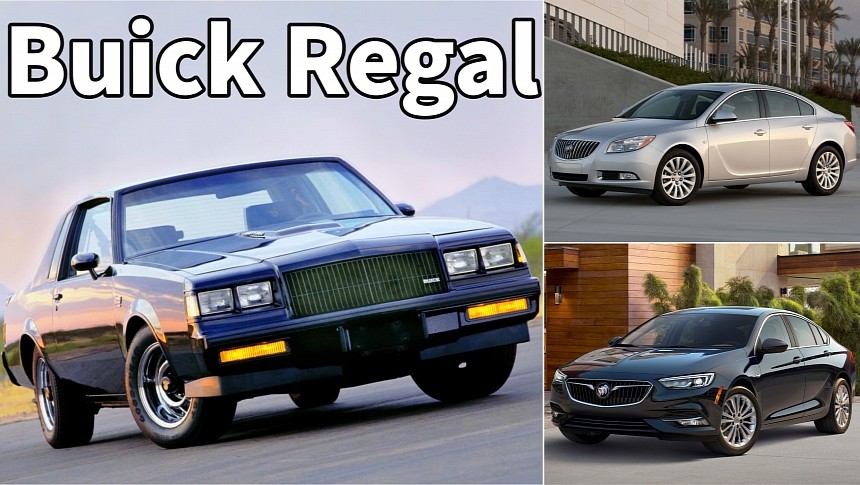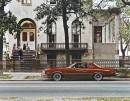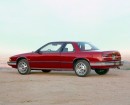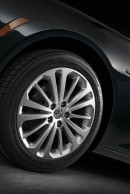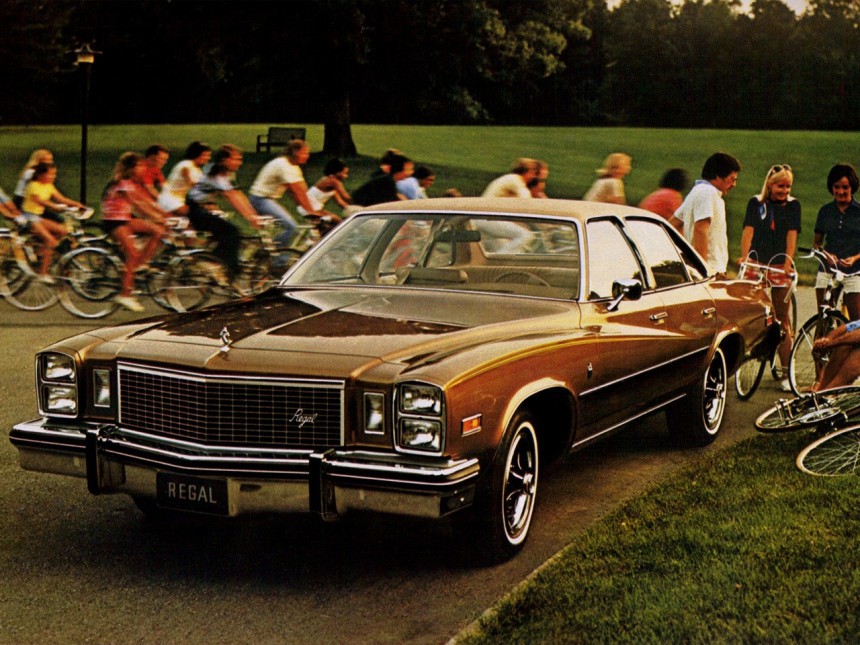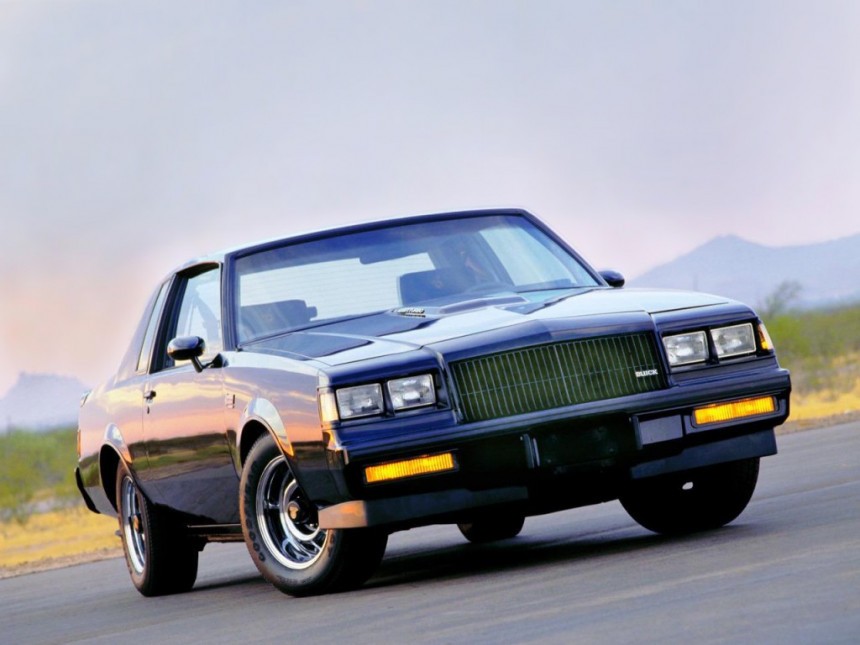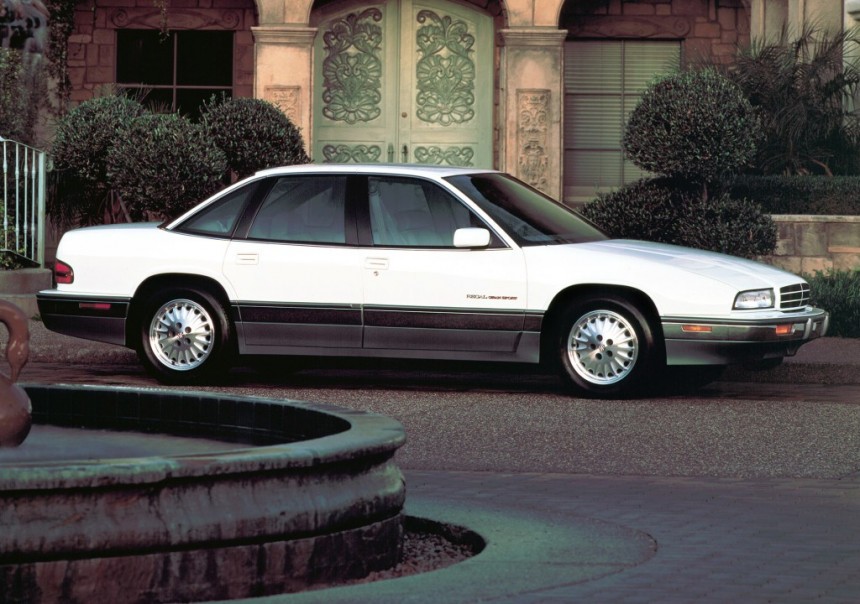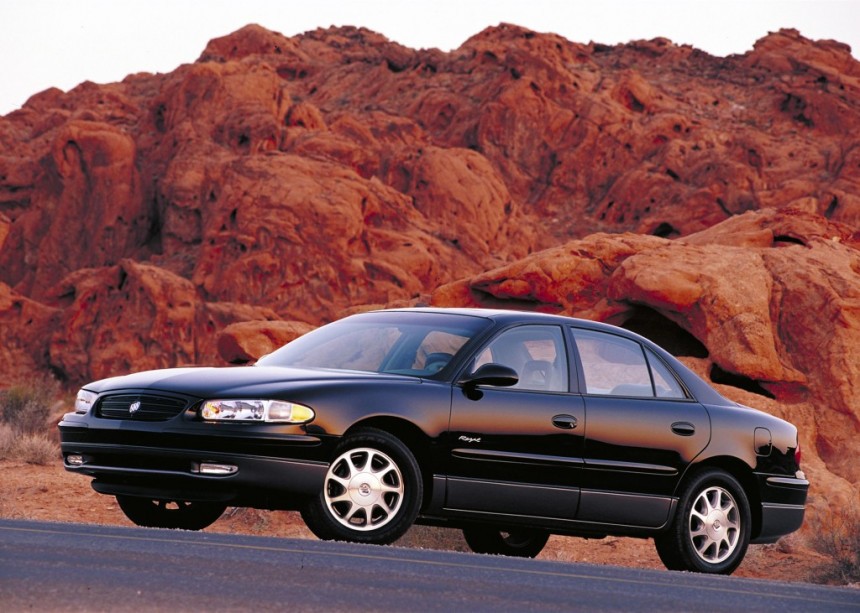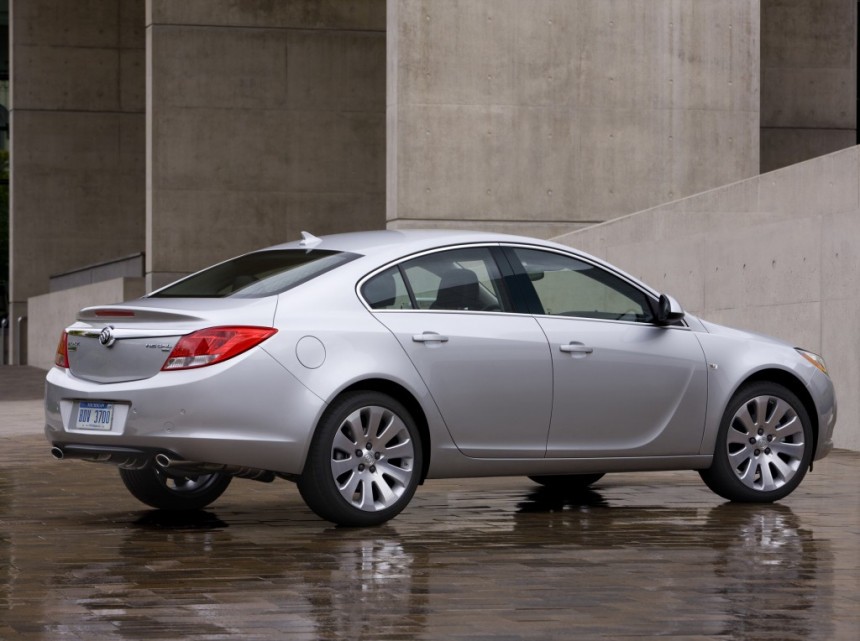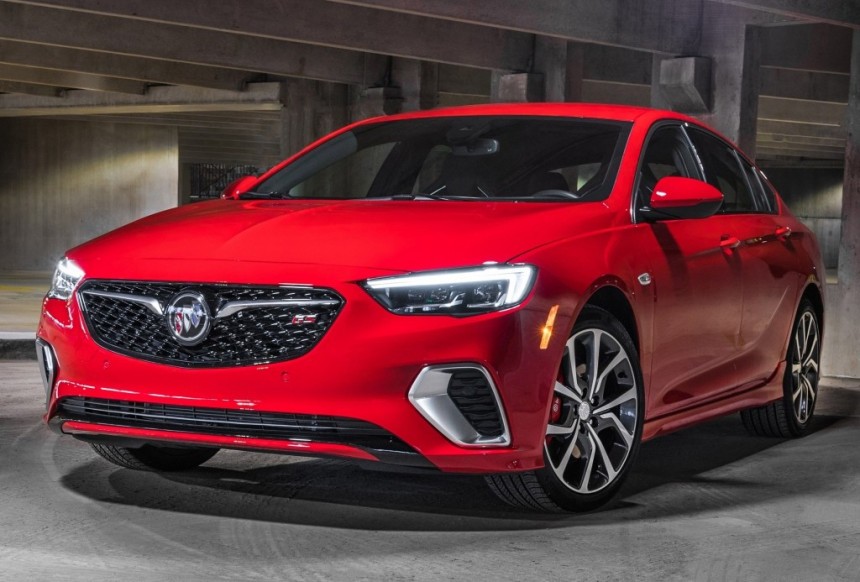Founded by David Dunbar Buick in 1899, the Buick Auto-Vim and Power Company was incorporated as the Buick Motor Company in 1903. The Detroit-based automaker was absorbed into General Motors in 1908 together with Olds Motor Works. Currently selling nothing else but crossovers, Buick outlived Oldsmobile specifically due to making the switch to utility vehicles.
More commercially successful in China rather than its home market, Buick gave us car enthusiasts a plethora of memorable automobiles. The 1949 Roadmaster comes to mind, along with the 1961 Special that introduced the aluminum-block 215 engine, the 1963 Riviera and 1963 Wildcat, 1970 GSX, and 1987 GNX.
The latter acronym stands for Grand National Experimental, but more on this Corvette-beating icon a bit later. Introduced for the 1973 model year and canned in the US after 2020, the Regal continues to be sold in the PRC, where sedans are still going unusually strong.
How did it come to this? Or better said, how did an American stalwart morph into a glorified Opel for China of all possible markets out there? There are many reasons for this tragic involution, and the best way for us to understand how Buick dropped the ball is to look into the Regal's long history, generation by generation.
Based on the A-body platform designed for intermediate-sized automobiles, the original joined the personal luxury segment rather late. Introduced for the 1973 model year, the first gen couldn't have arrived at a better time considering the 1973 oil crisis that eventually kicked off the Malaise Era into overdrive.
The Malaise Era can trace its roots back a few years prior to the 1973 oil crisis. It all started with a reduction in compression ratios to allow engines to run unleaded (and therefore lower octane) gasoline. In 1972, automakers ditched the gross power rating for the more realistic net power rating. With the deployment of emissions control devices, which included the catalytic converter from 1975 onward, muscle cars went extinct in favor of hideously underpowered luxury coupes and sedans.
This is the era during which Buick rolled out the Regal, then the only mid-sized car in the United States to feature a V6 as the standard engine. Also available with 350- and 455-ci V8 behemoths, the original went on to sell 504,773 coupes and 55,123 sedans through 1977.
Buick stuck to the personal luxury car theme with the second generation, which originally launched as a two-door coupe, just like its predecessor. The four-door sedan and – for the first time ever in the Regal's history – station wagon were introduced for model year 1982.
The Grand National wouldn't have happened without the Regal Sport Coupe of 1978. Its 3.8-liter V6 could be had with either a two- or four-barrel carburetor, making Buick the first mainstream automaker in the United States to embrace turbocharging. Buick understood that forced induction helps the Grand National stand out in the crowd, which brings us to the one-year-only GNX.
Closely related to the slightly lighter Turbo-T, the GNX was developed in partnership with ASC/McLaren. The GN to end all GNs cemented the G-body Regal's place in the Pantheon of American classics with roughly 300 horsepower and 420 pound-feet (569 Nm) to its name. By comparison, the 1988 model year Corvette cranked out 240 ponies and 345 pound-feet (468 Nm) of twist.
General Motors redesigned the Regal from the ground up in 1987 for the 1988 model year. Now built around the W platform, the midsizer also switched to front-wheel drive. The W-body third generation is rightfully considered the beginning of the end, although certain peeps don't fully agree with that, including myself. It was the late 1980s, and front-wheel drive was the simpler, less expensive, and more fuel-efficient layout.
Assembled exclusively in Canada at the Oshawa plant in Ontario, the Gen 3 came exclusively with six-cylinder engines and four-speed automatic transmissions. Displacements ranged between 2.8 and 3.8 liters. Buick couldn't make a case for turbocharging at all, though.
The 3.8 originally made 170 horsepower and 220 pound-feet (298 Nm). In the last year of the Gen 3, this engine was uprated to 200 horsepower and 225 pound-feet (305 Nm) of torque. A whopping 865,420 examples of the Buick Regal were produced between 1988 and 1996.
Still based on the W platform, the Regal became even more curvaceous for the 1997 model year. This generation dropped the two-door coupe altogether, and this generation was also the first to be produced outside of the United States. Care to guess where? Of course, the answer is China, where the biggest of the Big Three in Detroit has operated a joint venture with SAIC since 1997.
Essentially an upmarket Century, the Regal came with the naturally-aspirated L36 3.8-liter V6 of its predecessor and a supercharged version of said engine, referred to under regular production code L67. Over in China, prospective customers were offered anything from a lowly 2.2-liter I4 to a 3.0-liter V6 powerplant.
Developed in collaboration with SLP Performance, the GSX is best described as the GS with more oomph. The Stage 3 upgrade belts out 270 horsepower and 312 pound-feet (423 Nm) of torque as opposed to 240 horsepower and 280 pound-feet (380 Nm) for the GS.
The Gen 5 is – without a shadow of a doubt – the lowest point of the Regal. Nothing more than a badge-engineered Opel Insignia, this generation of the Regal is heavier than its German counterpart due to extra structural support in the B pillars. Introduced in 2009 at the Los Angeles Auto Show, the Regal debuted for the 2011 model year with either a 2.4- or a 2.0-liter lump.
The naturally-aspirated 2.4 is nothing to write home about, whereas the force-fed 2.0 in the CXL Turbo is. Connected to either a six-speed manual or an Aisin-supplied automatic, this mill is rated at 220 horsepower and 258 pound-feet (350 Nm). Come 2011, the GS returned to the lineup for the 2012 model year with an uprated 2.0 turbo backed up by a five-year warranty.
With 270 horsepower and 295 pound-feet (400 Nm) at its disposal, said engine helps the Regal GS hit 60 miles per hour (97 kilometers per hour) in 6.7 seconds. At the time, the direct-injected motor delivered the highest specific output of any series-production GM engine.
The best year of the Gen 5 in terms of US deliveries was 2011, when General Motors moved 40,144 units. The Gen 6 arrived at dealers for the 2018 model year, and – obviously enough – sold far worse than its forerunner.
Once again twinned with the Opel Insignia for Europe, Vauxhall Insignia for the United Kingdom, and Holden Commodore for Australia, the final generation topped 14,118 deliveries in the United States in 2018. "Dead on arrival" is arguably the most fitting way to describe it.
Clearly not your grandpa's Buick, the GS for 2019 replaced the previous LTG engine with the LGX, a 3.6-liter V6 of the naturally-aspirated variety. Not even the introduction of an all-road wagon could help the Regal's ailing sales, even though Subaru has no problems whatsoever selling the Outback in huge numbers. GM finally threw in the towel in December 2019 by announcing the withdrawal of the Regal after the 2020 model year. And that – ladies and gents – is how Buick became an SUV-centric brand in the United States.
The latter acronym stands for Grand National Experimental, but more on this Corvette-beating icon a bit later. Introduced for the 1973 model year and canned in the US after 2020, the Regal continues to be sold in the PRC, where sedans are still going unusually strong.
How did it come to this? Or better said, how did an American stalwart morph into a glorified Opel for China of all possible markets out there? There are many reasons for this tragic involution, and the best way for us to understand how Buick dropped the ball is to look into the Regal's long history, generation by generation.
Buick Regal Gen 1
The Malaise Era can trace its roots back a few years prior to the 1973 oil crisis. It all started with a reduction in compression ratios to allow engines to run unleaded (and therefore lower octane) gasoline. In 1972, automakers ditched the gross power rating for the more realistic net power rating. With the deployment of emissions control devices, which included the catalytic converter from 1975 onward, muscle cars went extinct in favor of hideously underpowered luxury coupes and sedans.
This is the era during which Buick rolled out the Regal, then the only mid-sized car in the United States to feature a V6 as the standard engine. Also available with 350- and 455-ci V8 behemoths, the original went on to sell 504,773 coupes and 55,123 sedans through 1977.
Buick Regal Gen 2
The Grand National wouldn't have happened without the Regal Sport Coupe of 1978. Its 3.8-liter V6 could be had with either a two- or four-barrel carburetor, making Buick the first mainstream automaker in the United States to embrace turbocharging. Buick understood that forced induction helps the Grand National stand out in the crowd, which brings us to the one-year-only GNX.
Closely related to the slightly lighter Turbo-T, the GNX was developed in partnership with ASC/McLaren. The GN to end all GNs cemented the G-body Regal's place in the Pantheon of American classics with roughly 300 horsepower and 420 pound-feet (569 Nm) to its name. By comparison, the 1988 model year Corvette cranked out 240 ponies and 345 pound-feet (468 Nm) of twist.
Buick Regal Gen 3
Assembled exclusively in Canada at the Oshawa plant in Ontario, the Gen 3 came exclusively with six-cylinder engines and four-speed automatic transmissions. Displacements ranged between 2.8 and 3.8 liters. Buick couldn't make a case for turbocharging at all, though.
The 3.8 originally made 170 horsepower and 220 pound-feet (298 Nm). In the last year of the Gen 3, this engine was uprated to 200 horsepower and 225 pound-feet (305 Nm) of torque. A whopping 865,420 examples of the Buick Regal were produced between 1988 and 1996.
Buick Regal Gen 4
Essentially an upmarket Century, the Regal came with the naturally-aspirated L36 3.8-liter V6 of its predecessor and a supercharged version of said engine, referred to under regular production code L67. Over in China, prospective customers were offered anything from a lowly 2.2-liter I4 to a 3.0-liter V6 powerplant.
Developed in collaboration with SLP Performance, the GSX is best described as the GS with more oomph. The Stage 3 upgrade belts out 270 horsepower and 312 pound-feet (423 Nm) of torque as opposed to 240 horsepower and 280 pound-feet (380 Nm) for the GS.
Buick Regal Gen 5
The naturally-aspirated 2.4 is nothing to write home about, whereas the force-fed 2.0 in the CXL Turbo is. Connected to either a six-speed manual or an Aisin-supplied automatic, this mill is rated at 220 horsepower and 258 pound-feet (350 Nm). Come 2011, the GS returned to the lineup for the 2012 model year with an uprated 2.0 turbo backed up by a five-year warranty.
With 270 horsepower and 295 pound-feet (400 Nm) at its disposal, said engine helps the Regal GS hit 60 miles per hour (97 kilometers per hour) in 6.7 seconds. At the time, the direct-injected motor delivered the highest specific output of any series-production GM engine.
Buick Regal Gen 6
Once again twinned with the Opel Insignia for Europe, Vauxhall Insignia for the United Kingdom, and Holden Commodore for Australia, the final generation topped 14,118 deliveries in the United States in 2018. "Dead on arrival" is arguably the most fitting way to describe it.
Clearly not your grandpa's Buick, the GS for 2019 replaced the previous LTG engine with the LGX, a 3.6-liter V6 of the naturally-aspirated variety. Not even the introduction of an all-road wagon could help the Regal's ailing sales, even though Subaru has no problems whatsoever selling the Outback in huge numbers. GM finally threw in the towel in December 2019 by announcing the withdrawal of the Regal after the 2020 model year. And that – ladies and gents – is how Buick became an SUV-centric brand in the United States.
